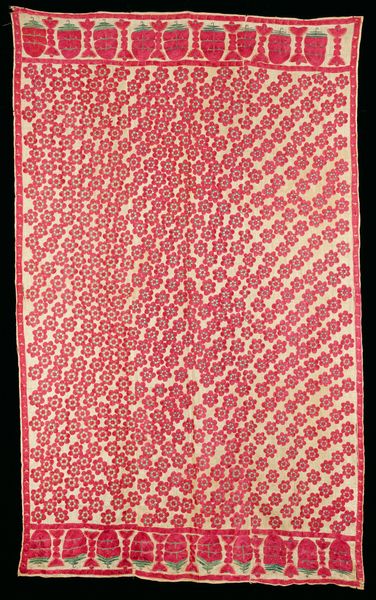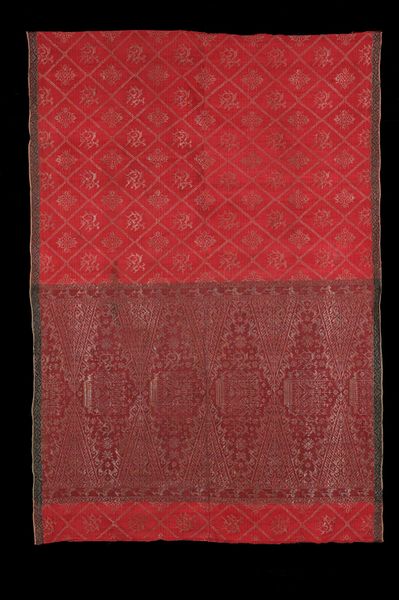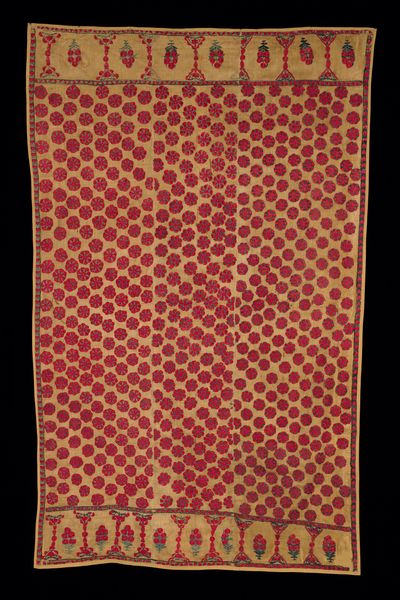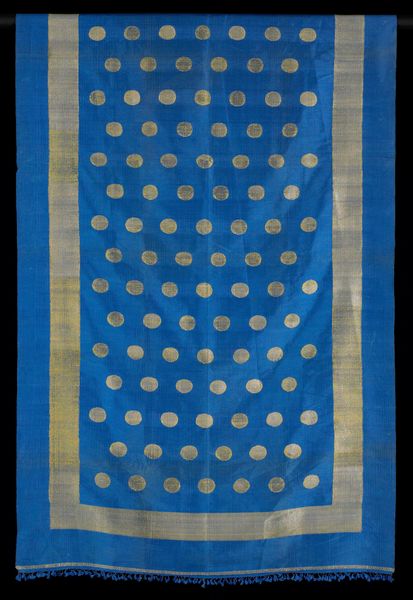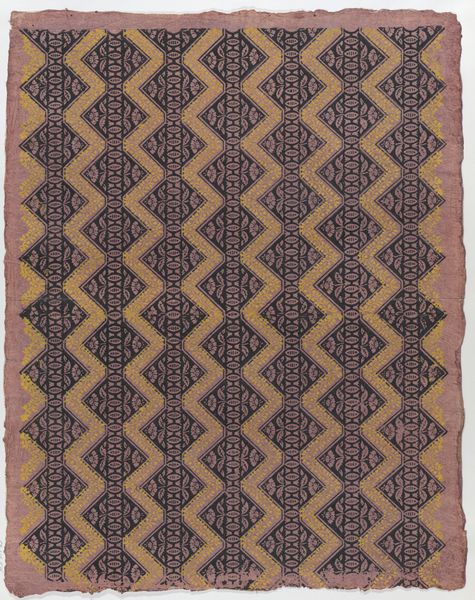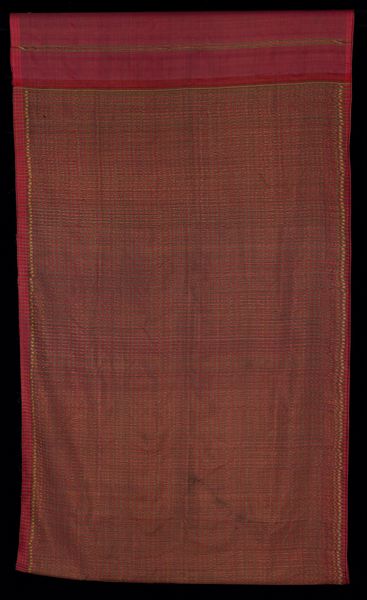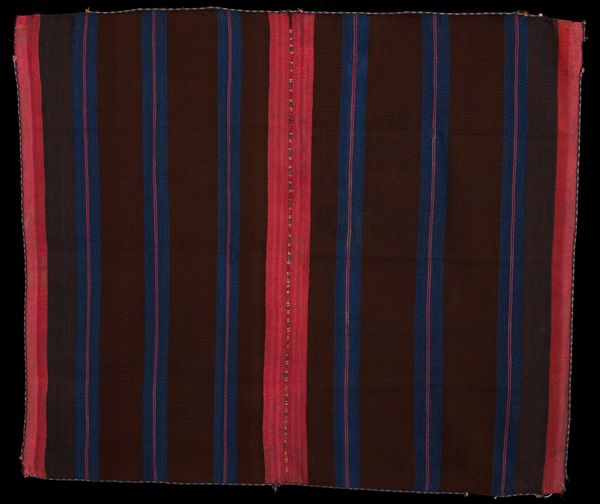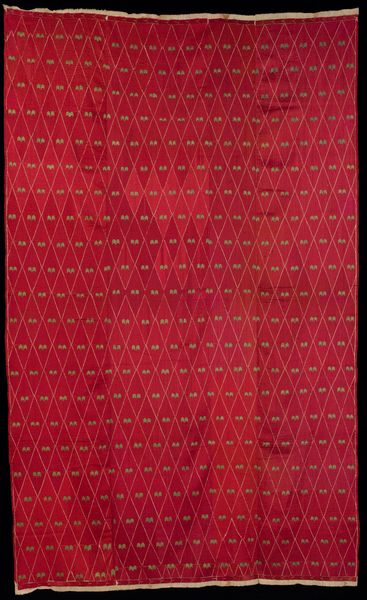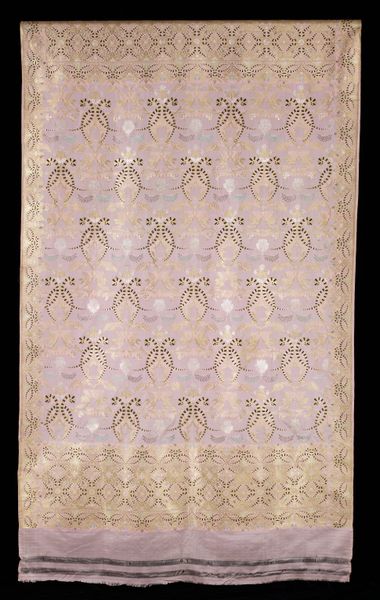
silver, silk, textile
#
silver
#
silk
#
textile
#
geometric pattern
#
chalky texture
#
abstract pattern
#
minimal pattern
#
repetition of pattern
#
pattern repetition
#
imprinted textile
#
layered pattern
#
funky pattern
#
printed materiality
Dimensions: 190 x 43 3/16 in. (482.6 x 109.7 cm)
Copyright: Public Domain
Editor: This is a sari, a type of textile likely made in the 20th century. It’s crafted with silk and silver threads. The piece immediately strikes me with its pervasive hot pink hue and subtle swirling texture. How do you approach this artwork? Curator: Primarily through its intrinsic properties. Note how the undulating pattern, seemingly etched onto the silk, engages in a dialogue with the color field itself. The work resists representational interpretation. Instead, it pushes us toward an engagement with surface and its subtle modulations. Editor: I see what you mean about the focus on the surface. It's less about what the pattern depicts, and more about how it interacts with the color and light. Does the regularity of the imprinted texture say something about the intended function? Curator: Indeed. Repetition in abstract textile designs introduces rhythm into this materiality, prompting deeper visual considerations of plane and texture. Its inherent flatness becomes not a limitation but a defining characteristic. Semiotics and phenomenology offer useful frameworks to study the tactile and visual sensations. Consider the effect of drape. How might gravity alter our understanding of this seemingly two-dimensional artwork? Editor: That's a fascinating point! Imagining how it would fold and flow definitely changes my perception of it. The patterns wouldn't be so uniform then. Curator: Precisely! Thus we must remain flexible in our engagement with the intrinsic formal characteristics. Form, after all, is never static. Editor: I never would have considered the impact of gravity on form so directly. That reframes the entire piece. Curator: That’s why understanding inherent forms enables appreciating infinite variability in artworks.
Comments
No comments
Be the first to comment and join the conversation on the ultimate creative platform.

